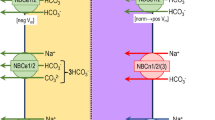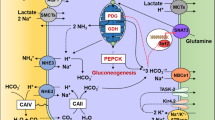Abstract
There is evidence that chronic hyponatremia, even when mild, may cause neurological signs and symptoms. These have been traditionally associated with water movement into nervous cells, as a result of the hypotonic state. The aim of the present study was to determine whether low extracellular sodium directly exerts negative effects on human neuronal cells, independently of reduced osmolality. We exposed neuroblastoma SK-N-AS and SH-SY5Y cells to sustained low extracellular sodium, thus mimicking a condition of chronic hyponatremia, both in the presence of reduced and in the presence of unaltered osmolality. We found that very low sodium (i.e., 115 mmol/L in SK-N-AS and 90 mmol/L in SH-SY5Y) significantly reduced cell viability. However, intermediate low sodium was able to cause cell distress, as assessed by the altered expression of anti-apoptotic genes and the reduced ability to differentiate into a mature neuronal phenotype. Noteworthy, these effects were observed also in the presence of unaltered osmolality. Moreover, we performed a comprehensive microarray analysis in cells maintained in normal sodium or in low sodium and unaltered osmolality, and we found that the most altered pathway included genes involved in “cell death and survival.” Among the more than 40 differentially expressed genes, the Heme oxygenase gene, which represents a transcriptional response to oxidative stress, showed the highest increase in the expression level. This study demonstrates that low extracellular sodium causes detrimental effects in neuronal cells that are at least in part independent of reduced osmolality. These findings further support the recommendation to effectively correct hyponatremia, even when mild and chronic.






Similar content being viewed by others
References
Adrogue, H. J., & Madias, N. E. (2000). Hyponatremia. The New England Journal of Medicine, 342, 1493–1499.
Barger, S. W., Horster, D., Furukawa, K., Goodman, Y., Krieglstein, J., & Mattson, M. P. (1995). Tumor necrosis factors alpha and beta protect neurons against amyloid beta-peptide toxicity: evidence for involvement of a kappa B-binding factor and attenuation of peroxide and Ca2 + accumulation. Proceedings of the National Academy of Sciences of the United States of America, 92, 9328–9332.
Barsony, J., Manigrasso, M. B., Xu, Q., Tam, H., & Verbalis, J. G. (2012). Chronic hyponatremia exacerbates multiple manifestations of senescence in male rats. Age doi:10.1007/s1135701193479.
Barsony, J., Sugimura, Y., & Verbalis, J. G. (2011). Osteoclast response to low extracellular sodium and the mechanism of hyponatremia-induced bone loss. The Journal of Biological Chemistry, 286, 10864–10875.
Cellai, I., Benvenuti, S., Luciani, P., Galli, A., Ceni, E., Simi, L., et al. (2006). Antineoplastic effects of rosiglitazone and PPARgamma transactivation in neuroblastoma cells. British Journal of Cancer, 95, 879–888.
Chen, K., Gunter, K., & Maines, M. D. (2000). Neurons overexpressing heme oxygenase-1 resist oxidative stress-mediated cell death. Journal of Neurochemistry, 75, 304–313.
Chen, K., & Maines, M. D. (2000). Nitric oxide induces heme oxygenase-1 via mitogen-activated protein kinases ERK and p38. Cellular and Molecular Biology, 46, 609–617.
Cho, G. W., Kang, B. Y., & Kim, S. H. (2010). Human angiogenin presents neuroprotective and migration effects in neuroblastoma cells. Molecular and Cellular Biochemistry, 340, 133–141.
Ciccarone, V., Spengler, B. A., Meyers, M. B., Biedler, J. L., & Ross, R. A. (1989). Phenotypic diversification in human neuroblastoma cells: Expression of distinct neural crest lineages. Cancer Research, 49, 219–225.
Elhassan, E. A., & Schrier, R. W. (2011). The use of vasopressin receptor antagonists in hyponatremia. Expert Opinion on Investigational Drugs, 20, 373–380.
Fujio, Y., & Walsh, K. (1999). Akt mediates cytoprotection of endothelial cells by vascular endothelial growth factor in an anchorage-dependent manner. The Journal of Biological Chemistry, 274, 16349–16354.
Greeve, I., Hermans-Borgmeyer, I., Brellinger, C., Kasper, D., Gomez-Isla, T., Behl, C., et al. (2000). The human DIMINUTO/DWARF1 homolog seladin-1 confers resistance to Alzheimer’s disease-associated neurodegeneration and oxidative stress. The Journal of Neuroscience, 20, 7345–7352.
Hoorn, E. J., Liamis, G., Zietse, R., & Zillikens, M. C. (2011). Hyponatremia and bone: An emerging relationship. Nature Reviews Endocrinology, 25, 33–39.
Keyse, S. M., & Tyrrell, R. M. (1989). Heme oxygenase is the major 32-kDa stress protein induced in human skin fibroblasts by UVA radiation, hydrogen peroxide, and sodium arsenite. Proceedings of the National Academy of Sciences of the United States of America, 86, 99–103.
Kinsella, S., Moran, S., Sullivan, M. O., Molloy, M. G. M., & Eustace, J. A. (2010). Hyponatremia independent of osteoporosis is associated with fracture occurrence. Clinical Journal of the American Society of Nephrology, 5, 275–280.
Ku, B. M., Joo, Y., Mun, J., Roh, G. S., Kang, S. S., Cho, G. J., et al. (2006). Heme oxygenase protects hippocampal neurons from ethanol-induced neurotoxicity. Neuroscience Letters, 405, 168–171.
Lee, P. J., Jiang, B. H., Chin, B. Y., Iyer, N. V., Alam, J., Semenza, G. L., et al. (1997). Hypoxia-inducible factor-1 mediates transcriptional activation of the heme oxygenase-1 gene in response to hypoxia. The Journal of Biological Chemistry, 272, 5375–5381.
Mancuso, C. (2004). Heme oxygenase and its products in the nervous system. Antioxidant and Redox Signaling, 6, 878–887.
Moskalev, A. A., Smit-McBride, Z., Shaposhnikov, M. V., Plyusnina, E. N., Zhavoronkov, A., Budovsky, A., et al. (2012). Gadd45 proteins: Relevance to aging, longevity and age-related pathologies. Ageing Research Reviews, 11, 51–66.
Neuman, T., Stephens, R. W., Salonen, E. M., Timmusk, T., & Vaheri, A. (1989). Induction of morphological differentiation of human neuroblastoma cells is accompanied by induction of tissue-type plasminogen activator. Journal of Neuroscience Research, 23, 274–281.
Novo, E., Busletta, C., Bonzo, L. V., Povero, D., Paternostro, C., Mareschi, K., et al. (2011). Intracellular reactive oxygen species are required for directional migration of resident and bone marrow-derived hepatic pro-fibrogenic cells. Journal of Hepatology, 54, 964–974.
Oh-Hashi, K., Maruyama, W., & Isobe, K. (2001). Peroxynitrite induces GADD34, 45, and 153 VIA p38 MAPK in human neuroblastoma SH-SY5Y cells. Free Radical Biology & Medicine, 30, 213–221.
Peri, A., & Combe, C. (2012). Considerations regarding the management of hyponatraemia secondary to SIADH. Best Practice & Research: Clinical Endocrinology & Metabolism, 26, S16–S26.
Peri, A., Pirozzi, N., Parenti, G., Festuccia, F., & Menè, P. (2010). Hyponatremia and the syndrome of inappropriate secretion of antidiuretic hormone (SIADH). Journal of Endocrinological Investigation, 33, 671–682.
Piacentini, M., Piredda, L., Storace, D. T., Annicchiarico-Petruzzelli, M., Mattei, M., Oliverio, S., et al. (1996). Differential growth of N- and S-type human neuroblastoma cells xenografted into SCID mice: Correlation with apoptosis. The Journal of Pathology, 180, 415–422.
Renneboog, B., Musch, W., Vandemergel, X., Manto, M. U., & Decaux, G. (2006). Mild chronic hyponatremia is associated with falls, unsteadiness and attention deficits. American Journal of Medicine, 119, 71.
Ryter, S. W., & Choi, A. M. (2002). Heme oxygenase-1: Molecular mechanisms of gene expression in oxygen-related stress. Antioxidant and Redox Signaling, 4, 625–632.
Sharma, R. K., Zhou, Q., & Netland, P. A. (2008). Effect of oxidative preconditioning on neural progenitor cells. Brain Research, 1243, 19–26.
Shruster, A., Melamed, E., & Offen, D. (2010). Neurogenesis in the aged and neurodegenerative brain. Apoptosis, 15, 1415–1421.
Sondell, M., Lundborg, G., & Kanje, M. (1999). Vascular endothelial growth factor has neurotrophic activity and stimulates axonal outgrowth, enhancing cell survival and Schwann cell proliferation in the peripheral nervous system. The Journal of Neuroscience, 19, 5731–5740.
Takizawa, S., Hirabayashi, H., Matsushima, K., Tokuoka, K., & Shinohara, Y. (1998). Induction of heme oxygenase protein protects neurons in cortex and striatum, but not in hippocampus, against transient forebrain ischemia. Journal of Cerebral Blood Flow and Metabolism, 18, 559–569.
Tamatani, M., Che, Y. H., Matsuzaki, H., Ogawa, S., Okado, H., Miyake, S., et al. (1999). Tumor necrosis factor induces Bcl-2 and Bcl-x expression through NFkappaB activation in primary hippocampal neurons. The Journal of Biological Chemistry, 274, 8531–8538.
Thompson, C. (2010). Hyponatraemia: New associations and new treatments. European Journal of Endocrinology, 162, S1–S3.
Thompson, C., & Hoorn, E. J. (2012). Hyponatraemia: An overview of frequency, clinical presentation and complications. Best Practice & Research: Clinical Endocrinology & Metabolism, 26, S1–S6.
Verbalis, J. G., Barsony, J., Sugimura, Y., Tian, Y., Adams, D. J., Carter, E. A., et al. (2010). Hyponatremia-induced osteoporosis. Journal of Bone and Mineral Research, 25, 554–563.
Verbalis, J. G., Goldsmith, S. R., Greenberg, A., Schrier, R. W., & Sterns, R. H. (2007). Hyponatremia treatment guidelines 2007: Expert panel recommendations. American Journal of Medicine, 120, S1–S21.
Wald, R., Jaber, B. L., & Price, L. L. (2010). Impact of hospital-associated hyponatremia on selected outcomes. Archives of Internal Medicine, 170, 294–302.
Waterham, H. R., Koster, J., Romeijn, G. J., Hennekam, R. C., Vreken, P., Andersson, H. C., et al. (2001). Mutations in the 3beta-hydroxysterol Delta24-reductase gene cause desmosterolosis, an autosomal recessive disorder of cholesterol biosynthesis. The American Journal of Human Genetics, 69, 685–694.
Acknowledgments
This study was supported by Ente Cassa di Risparmio di Firenze, from the Regione Toscana “Bando Salute 2009,” from Ministero dell’Istruzione, dell’Università e della Ricerca (PRIN 2009 No. 2009YJTBAZ), and from Otsuka Pharmaceutical Italy.
Conflict of interest
The authors declare that they have no conflict of interest.
Author information
Authors and Affiliations
Corresponding author
Additional information
Susanna Benvenuti, Cristiana Deledda, and Paola Luciani equally contributed to this study.
Electronic supplementary material
Below is the link to the electronic supplementary material.
Rights and permissions
About this article
Cite this article
Benvenuti, S., Deledda, C., Luciani, P. et al. Low Extracellular Sodium Causes Neuronal Distress Independently of Reduced Osmolality in an Experimental Model of Chronic Hyponatremia. Neuromol Med 15, 493–503 (2013). https://doi.org/10.1007/s12017-013-8235-0
Received:
Accepted:
Published:
Issue Date:
DOI: https://doi.org/10.1007/s12017-013-8235-0




